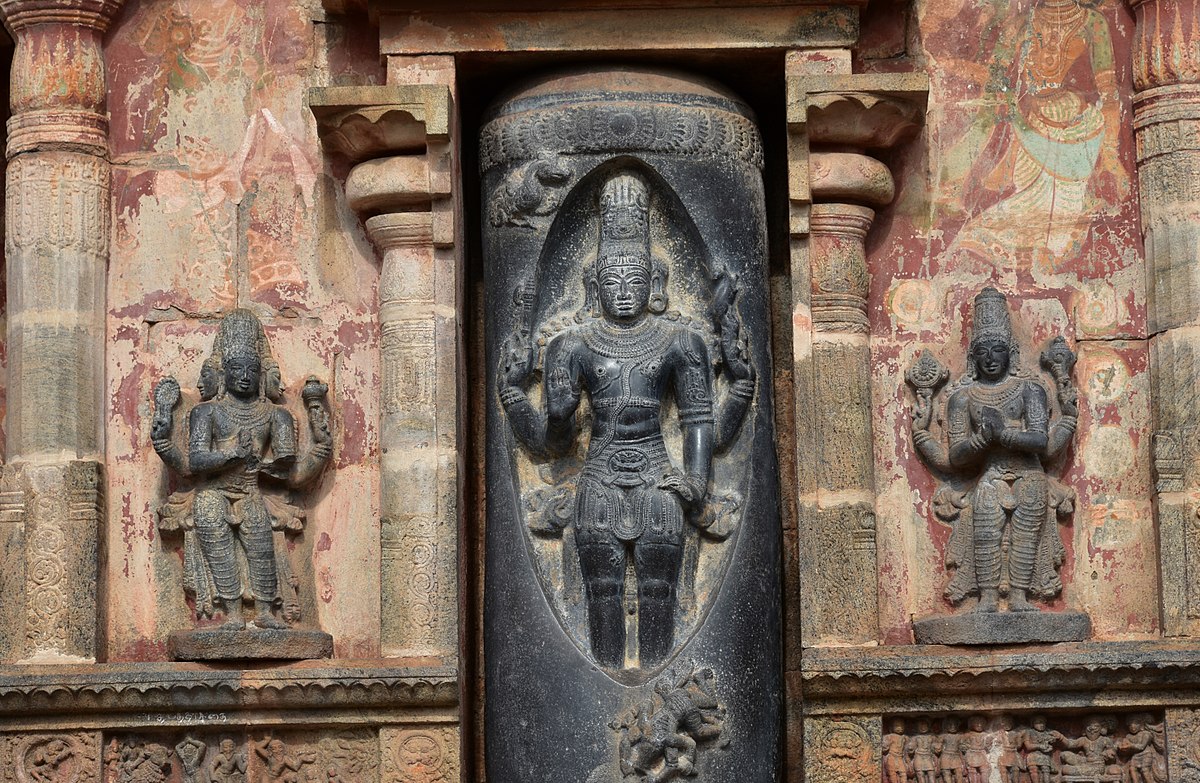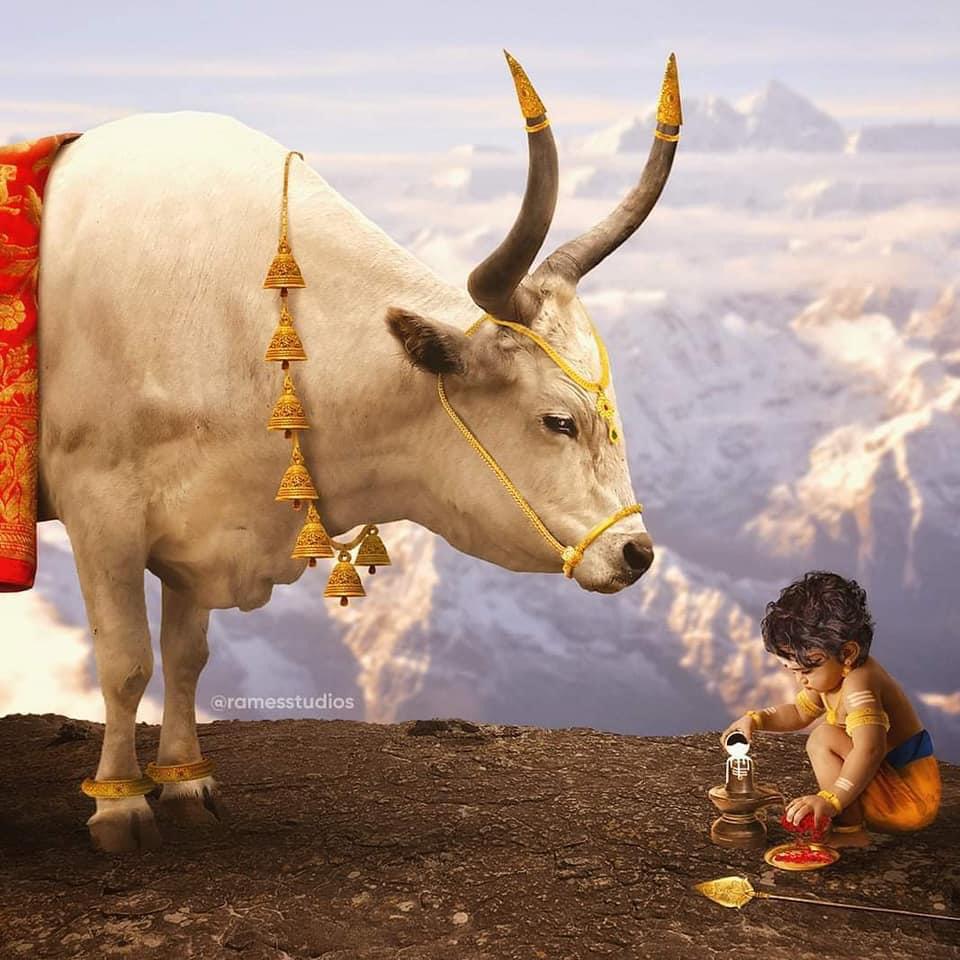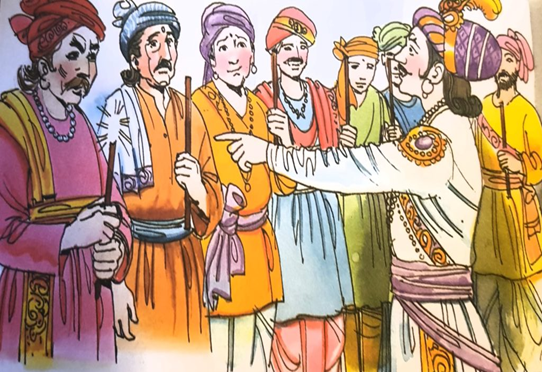AIRAVATESVARA TEMPLE - DARASURAM
AIRAVATESVARA TEMPLE - DARASURAM
Temples of the bygones age served not only as places of worship but also as repositories of culture. They have enabled the artists to produce masterpieces, some of which have withstood the ravages of time. The four gigantic and massive temples marked by towering vimanas perched over the garbagriha - the Brihadisvara temple of Thanjavur, the Brihadisvara temple of Gangaikonda Cholpuram, the Airavatesvara temple of Darasuram and the Kampaharesvara temple of Tribhuvanam vie with one another in grandeur and in revealing sculptures of a very high order even while maintaining their unique and distinctive features. The Chola period during which all these four temples arose was marked by a resurgence of Tamil culture. The Airavatesvara temple of Darasuram, built in the reign of Rajaraja II when the Chola tide was ebbing, bears ample testimony to the consummate skill of the Tamil artist. This village lies on the main road connecting Kumbakonam with Thanjavur.
The place was called Rajarajeshwaram, after Rajaraja II (1146-73) who is credited with the construction of the Airavatesvara temple. Ottakoothar, one of the luminaries who adorned the court of Kulothunga Chola, refers to the place in his work Takkayabarani, a war epic based on Daksha's sacrifice. The name was subsequently transformed into Darasuram. Historians opine that it formed a part of Pazhayarai which was one of the capitals of the Chola empire. The temple complex itself was suppose to be a huge one, encompassing seven massive walls and several prakarams. The temple which was in a dilapidated condition was resuscitated by the stupendous efforts of the Archeological Survey of India.
According to the Sthalapurana, the place was named after Darasura, a demon who with his thousand consorts worshipped the Lord Yama, afflicted by a mortal disease took a bath in the holy tank and got himself cured of the malady. Airavata, the divine elephant expiated for its sins here and was absolved of them by divine grace. The Lord henceforth came to be called Airavatesvara. Another story states that the temple was built to appease a shepherdess who was a native of the place and who had donated the huge rock that adorns the sikhara of the Big Temple of Thanjavur. It is an uphill task to disentangle the kernel of truth from the husk of popular myths.
The temple complex is encompassed by huge compound wall (107.50 meters east-west and 69.40 meters north-south). The temple-proper comprises of the garbagriha, the ardhamantapa, the mahamantapa, and the agramantapa (Rajagambhira tirumantapa) spanning an area 23 meters by 63 meters. The Rajagambhira mantapa is conceived as a chariot with lively shaped wheels bearing hubs and spokes and drawn by well-caparisoned and trainning horses. It was probably inspired by similar specimens that adorn temples like the Vikramasolisvarar temple of Thukkachi, the Nataraja mantap of the Sabhanayagar temple of Chidambaram, the Amirtaghatesvara Pazhaiyarai. It must have inspired the magnificent Sun Temple of Konarak that arose a century later. An ornately carved flight of steps lead to the mantapa from the east and west. The exquisitely carved balustraded flights of steps leading to the balipeeta that is located outside the temple complex are named as 'singing step' as they emit musical notes of varying frequencics when struck.
The Solitary prakara is encompassed by the "thiruchuttru maligai" which is a colonnaded elevated platform covering the entire length of the compound wall. The images of the 108 hymnists who were enjoyed to recite the Thevaram hymns grace a part of the southern compound wall. The small tower that is formed at the eastern entrance was probably adorned by numerous images of the divinities but only the name labels of such figures are extant now. The northern part of the Rajagambhira mantap contains an improvised cell that houses the divine consort known as Deivanayaki Amman but the exact age of the inception of this image is not clear.
The pillars of the Rajagambhira mantap provide a treat to the eye in the form of miniature sculpture portraying various episodes from the Puranas and the epics. Mention could be made of Kama - Dahana, Siva's marriage, the life story of Kamakshi Amman, scenes from the Skandapurana, and Vinayaka. The three-headed Ardhanarisvara is seen wearing karanda makuta and grasping articles like rosary, dagger, lotus, pasa, dhanda and kapala in his hands which are eight in number. The right half seems to denote the male aspect while the other side stands for female aspects. Dr,S.Nagaswamy opines that this specimen represents Mahamaya Shakthi, the manifestation of the Supreme female Goddess Adhiparashakthi. The image accommodated on the western side of the Rajagambhira mantap has been identified with Goddess Annapoorni by Mr.Bhaskara Tondaiman. Another view identifies her with Mohini, in whose form Mahavishnu duped the Asuras to offer ambrosia to the Devas. Ganga and Yamuna grace the entrance of the shrine of the Amman in the form of dwarapalakis. In a small shrine Sarabhamurthy is depicted as relieving Narasimha, Ganesa, Mahesamurthy, Lingodhbhava, Kamantaka, Agni, Brahma, Vayu, Indra, Kaumari, the four armed Nagaraja with the serpent hood over his head, sage Agastya, imparting the lessons to his pupils; the awesome Ahorabhadra, with four arms and three faces, the enlightened Dakshinamurthy enunciating the rishis into the mysteries of the Vedas; the triumphant Durga, standing upon the served head of the Asura; the majestic Tripurantaka, holing the axe and the bow; the sanguinary Gajasamharamurthy, dancing in ecstacy upon the skin of the vanquised elephant; Goddess Annapoorani, holding the Ratna kalasa in one hand and the lotus-bud in the other; the twelve armed karthikeya; the catalogue could never end. Some of the sculptures found in isolation here, have been transferred to the Thanjavur Art Gallery. The steps leading to one of the mantapas has the motif of a ferocious lion pouncing on an elephant; another motif gives the appearance of a lion when seen from one angle and thatof a bull when seen from another. The bewitching charm and the sublime beauty of the sculptures beggar description.
To the sixty three Saiva saints goes the credit of rejuvenating Saivism from near oblivion. By doing yeomen service to the people and by performing miracles they endeared themselves in the hearts of the masses. They punctiliously visited the temples and composed songs lauding the deeds of the Almighty. They rode on the crest of the wave that was to make Saivism, the state religion and out-manoeuvred the Buddhists and the Jains. As a mark of reverence the figures of these savants were incised on the outer walls of the sanctum. They are no mere isolated sculptures; they are biographies of the saints in stone. Some of the memorable events of the life of the saints are depicted here. Beneath the sculptures are descriptive labels, most of which are still in readable condition. At another place the sculptures of the 108 Saiva Acharyas are found along with descriptive labels. Sadly most of these labels are in mutilated condition.
Takkayabarani, composed by poet Ottakoothar, while describing the episode of Daksha's discomfiture seem to allude to the Presiding Deity of this temple. The awesome sculpture of Virabhadra housed in this temple seems to testify to this connection.
Inscriptions belonging to the reigns of the Chola monarchs Rajaraja II, Kulothunga I, Rajadhiraja I, Kulothunga III, and Rajadhiraja II and of the Pandya monarchs Mahavarman Sri Vallabha Devar and Maravarman Tribhuvanachakravarthi Vira Pandya Devar have been traced in various parts of the temple. Land was gifted for repairing and gliding the sikhara of the temple. Gift was made for worship and offering at the temple of 'Irarasuram'. Provision was made for conducting festivals at the temple of 'Irarasuram Udaya Nayanar'. Rajadhiraja I after sacking Kalyani brought the image of a dwarapalaka as a trophy and performed a virabhishekam in 1504 A.D. The outer tower was built by Igai Muvendaraiyar.
Different views have been put forth by scholar regardind the age of the temple. On the basis of the architectural pattern DR.V.A.Smith has assigned it the same age as that of Gangaikondacholapuram. Some have assigned a Chalukyan influence in the temple. A study of the various materials reveal the fact that the temple was a creation of Rajadhiraja II (1146-1173).
The most beautiful monument of this period, a sculptor's dream re-lived in stone, is the temple at Darasuram, which is uneqalled in its technical perfection and exuberant ornamentation. The wheel and horse motif here transform the mantap into a chariot. This chola device was appreciated and adopted by other craftsmen in the Eastern Chalukya and Kalinga territories most notably sculptor of the famous temple at Konarak.
The profuse occurrence of dancing apsaras to the accompaniment of musical instruments in various part of the temple reveals the interest, the Chola rulers had in fine arts. The description of the lives of the Saiva Savants, the portrayals of ponds filled with aquatic animals, the majestic figures of king with royal paraphernalia accompanied by a huge retinue of Chauri-bearers, sages etc., have a marked similarity to such corresponding scenes in the temples at Borobodur and Prambanam (Indonesia). This similarity could be ascribed to the wide contacts the Tamils had with the Far East.










Comments
Post a Comment